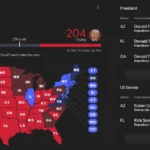The U.S. economy appears to be on relatively stable ground in the latter half of 2024. While inflation has eased, the progress has been uneven. The labor market is showing signs of loosening, and the Federal Reserve remains cautious about lowering interest rates.
Many economists, including members of the Federal Open Market Committee (FOMC), are optimistic about a “soft landing” for the U.S. economy in 2024, which would involve slowing GDP growth without slipping into a recession. However, global markets were unsettled in early August following a weaker-than-expected U.S. jobs report, which saw the unemployment rate rise to 4.3%. This spurred fears of a potential economic downturn, leading investors to sell off stocks and risky assets in favor of government bonds. Some analysts worry that the Fed may have delayed too long in cutting interest rates. Despite a relatively quick market recovery by the end of the month, this volatility highlighted how vulnerable 2024’s otherwise strong market could be to sudden reversals.
A misstep in Fed policy could potentially lead to an economic contraction and trigger a recession, making the upcoming months critical for the central bank. While investors anticipate an interest rate cut this month, there is debate over whether a quarter-point or half-point reduction is more appropriate.
Economic recessions are a normal part of the economic cycle and shouldn’t cause undue alarm. Nonetheless, investors can navigate potential downturns effectively by staying informed about key risk factors and strategically positioning their portfolios to perform well if a recession hits in 2024 or 2025.
Discover more from USA Liberty News
Subscribe to get the latest posts sent to your email.








